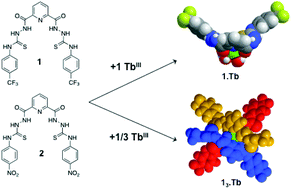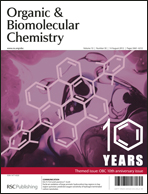Formation of luminescent terbium(iii) self-assemblies from pyridyl bis-amidothioureas based ligands in MeOH and in water–DMSO solutions and their use in anion sensing application†‡
Abstract
The

- This article is part of the themed collection: Organic & Biomolecular Chemistry 10th Anniversary

 Please wait while we load your content...
Please wait while we load your content...